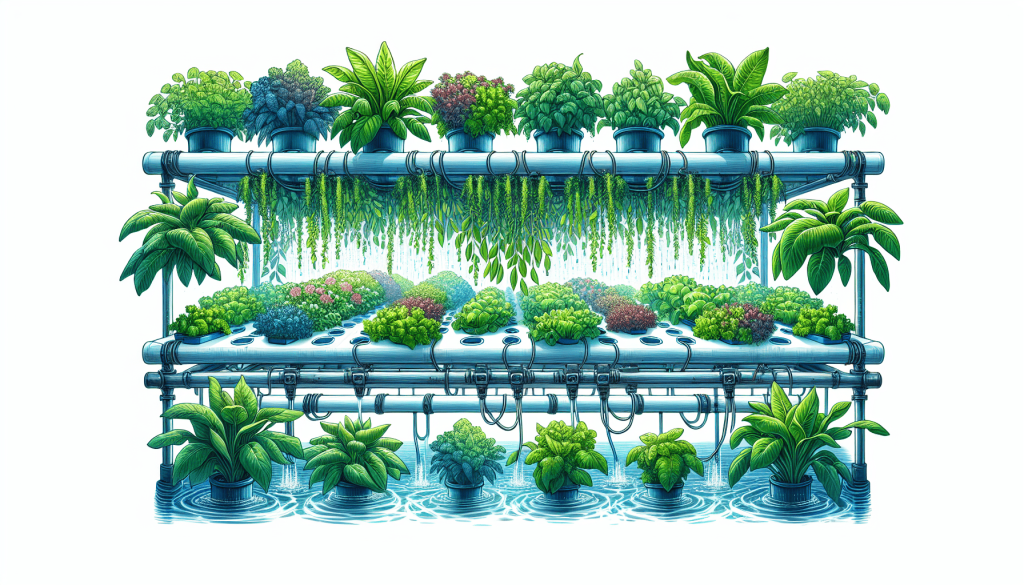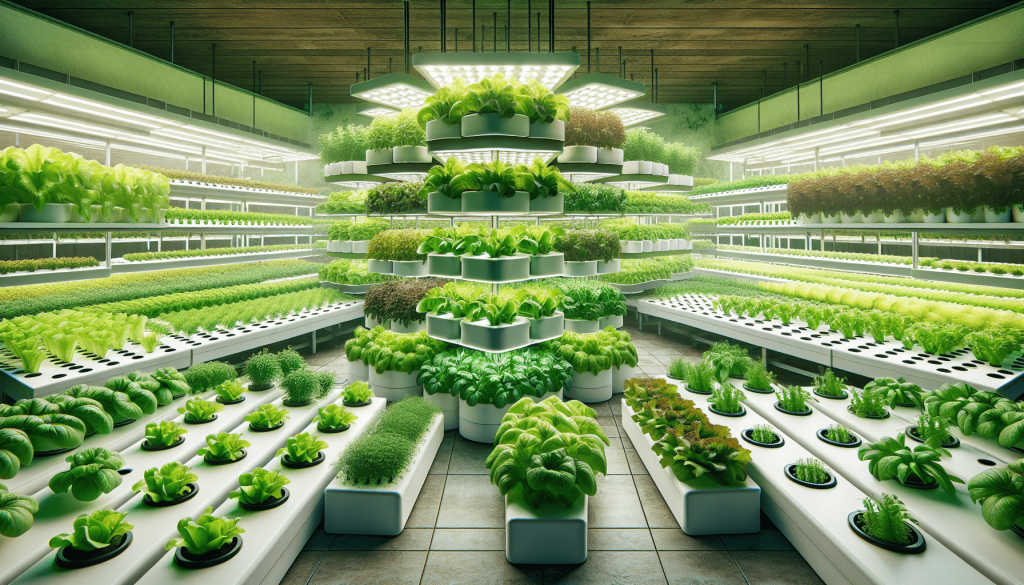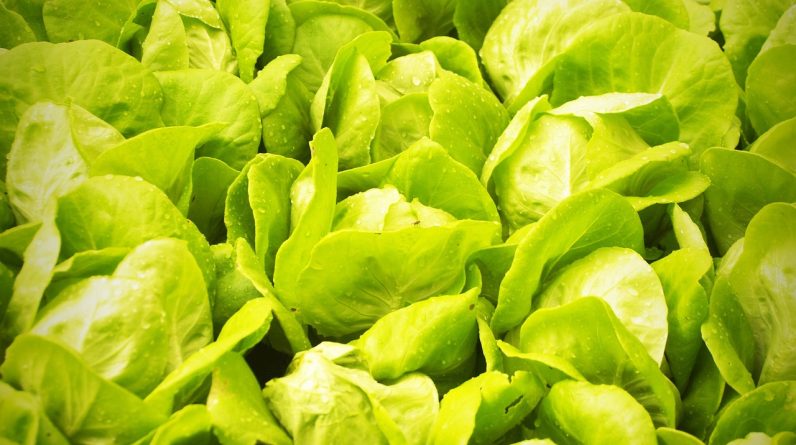
Have you ever wondered how plants can grow without soil and still thrive? Enter hydroponic farming, a revolutionary way of cultivating plants using water and nutrients, without the need for traditional soil. This innovative technique allows for increased crop yields, shortened growth cycles, and reduced water usage compared to conventional farming methods. By immersing the plant roots in a nutrient-rich water solution, growers can create an optimal growing environment, providing the perfect conditions for plants to flourish. Join us as we explore the fascinating world of hydroponic farming and discover how it is transforming agriculture for a more sustainable future.

Definition of Hydroponic Farming
Hydroponic farming is a modern agricultural technique that eliminates the need for soil, allowing plants to grow directly in a nutrient-rich water solution. The concept of hydroponics is based on the principle that plants can thrive without soil if their essential nutrients are provided through water and a suitable growing medium. This innovative method offers numerous benefits over traditional soil-based farming, revolutionizing the way we grow crops.
Explanation of Hydroponic Farming
In hydroponic farming, plants are grown in a controlled environment, usually indoors, where the climate, lighting, and nutrient levels can be carefully regulated. Instead of absorbing nutrients from the soil, plants obtain their essential elements directly from the water solution. This approach allows for more efficient nutrient uptake, resulting in faster growth rates and higher crop yields. Additionally, hydroponic systems can be tailored to meet the specific needs of each plant, providing optimal conditions for growth and development.

Comparison to Traditional Soil-Based Farming
When comparing hydroponic farming to traditional soil-based farming, several key differences emerge. In soil-based farming, plants rely on the nutrients naturally present in the soil, which can vary in quality and availability. Hydroponic farming eliminates this variability by delivering a precise and balanced nutrient solution directly to the plant roots. This ensures that plants receive all the essential elements they need to thrive, resulting in healthier and more productive crops.
Furthermore, traditional farming often requires large amounts of water, as much of it is lost through evaporation and inefficient distribution. Hydroponic systems, on the other hand, use significantly less water due to their closed-loop design. Water can be recycled and reused within the system, reducing waste and conserving this precious resource.

Benefits of Hydroponic Farming
Improved Crop Yield
One of the most significant advantages of hydroponic farming is its ability to boost crop yields. By providing plants with the ideal balance of nutrients, water, and light, hydroponic systems create optimal growing conditions that can accelerate plant growth. This improved efficiency allows farmers to grow more plants in a smaller space, maximizing productivity and increasing overall crop yields.
Water Conservation
Water scarcity is a pressing issue in many regions, making water conservation a critical consideration for farmers. Hydroponic farming addresses this concern by using up to 90% less water compared to traditional farming methods. Water is recirculated within the system, reducing waste and ensuring that plants receive an adequate water supply without putting additional strain on local water resources.
Controlled Environment
In a hydroponic farm, the growing environment is carefully controlled, providing plants with optimal conditions for growth. By adjusting factors such as temperature, humidity, and lighting, farmers can create a stable and consistent environment that promotes plant health and productivity. This control over the growing environment allows for year-round cultivation, irrespective of external factors such as weather or seasonal variations.
Reduced Need for Pesticides
Traditional farming often relies on the use of pesticides to protect crops from pests and diseases. However, pesticide use can have negative ecological consequences and may pose risks to human health. In contrast, hydroponic farming offers a more sustainable and environmentally friendly approach to pest management. Because hydroponic crops are grown in a controlled environment, the risk of pest infestations is significantly reduced. Integrated Pest Management (IPM) techniques can be employed to minimize the need for pesticides further, ensuring that crops remain healthy and safe for consumption.
Year-Round Production
Hydroponic farming allows for year-round cultivation, overcoming the limitations imposed by seasonal variations. By creating an ideal growing environment indoors, crops can be produced consistently throughout the year, ensuring a continuous supply of fresh produce regardless of the prevailing weather conditions. This year-round production capability is especially valuable in regions with harsh climates or limited arable land, offering a reliable and sustainable way to meet the demands of a growing population.

Types of Hydroponic Systems
There are several different types of hydroponic systems, each with its own advantages and characteristics. Understanding the various systems can help farmers choose the most suitable option for their specific needs and crop requirements.
Nutrient Film Technique (NFT)
The Nutrient Film Technique (NFT) is a popular hydroponic system that employs a shallow, sloping channel to deliver a thin film of nutrient solution to plant roots. Plants are placed in small baskets or grow cups that sit on top of the channel, allowing the roots to hang down and absorb the nutrient solution. The excess solution flows back into a reservoir for recirculation. NFT systems are known for their simplicity and efficiency, making them a common choice for growing leafy greens, herbs, and smaller crops.
Drip Irrigation
Drip irrigation is a widely used hydroponic system that involves delivering a controlled amount of nutrient solution directly to the base of each plant. In this system, plants are typically grown in individual pots, and a network of tubes and emitters is used to deliver the solution. The nutrient solution drips slowly onto the growing medium, ensuring that each plant receives the necessary nutrients. Drip irrigation systems are versatile and can be used for a wide range of crops, including vegetables, fruits, and flowering plants.
Deep Water Culture (DWC)
Deep Water Culture (DWC) is a hydroponic system where plants are suspended in a nutrient-rich water solution. The plant roots are immersed in the solution while being supported by a floating platform or raft. Oxygen is continuously supplied to the roots through air stones or diffusers to prevent root rot and maintain healthy growth. DWC systems are popular for growing larger plants, such as tomatoes and cucumbers, as they provide ample water and nutrients to support their growth.
Aeroponics
Aeroponics is a high-tech hydroponic system that suspends plants in an air or mist environment, delivering nutrients through a fine mist sprayed onto the roots. This method allows for maximal oxygen exposure and nutrient absorption, promoting rapid growth and healthier plants. Aeroponic systems are highly efficient, using minimal water and producing high yields in a relatively small space. They are often used for growing leafy greens, herbs, and more delicate crops.
Wick System
The Wick System is a simple and passive hydroponic system that uses a wick to transport the nutrient solution from the reservoir to the plant roots. The wick, typically made of a porous material like cotton or felt, draws the solution up, ensuring a constant supply of water and nutrients to the plants. Wick systems are easy to set up and require no electricity or pumps. They are commonly used for growing herbs, smaller vegetables, and low-maintenance plants.
Comparison of Different Systems
Each hydroponic system has its own set of advantages and limitations, making it important to understand the specific requirements of crops and the available resources. Factors such as crop type, desired crop yield, space availability, and budget will influence the choice of hydroponic system. By carefully considering these factors, farmers can select the most appropriate system that meets their needs and maximizes the potential for successful cultivation.



